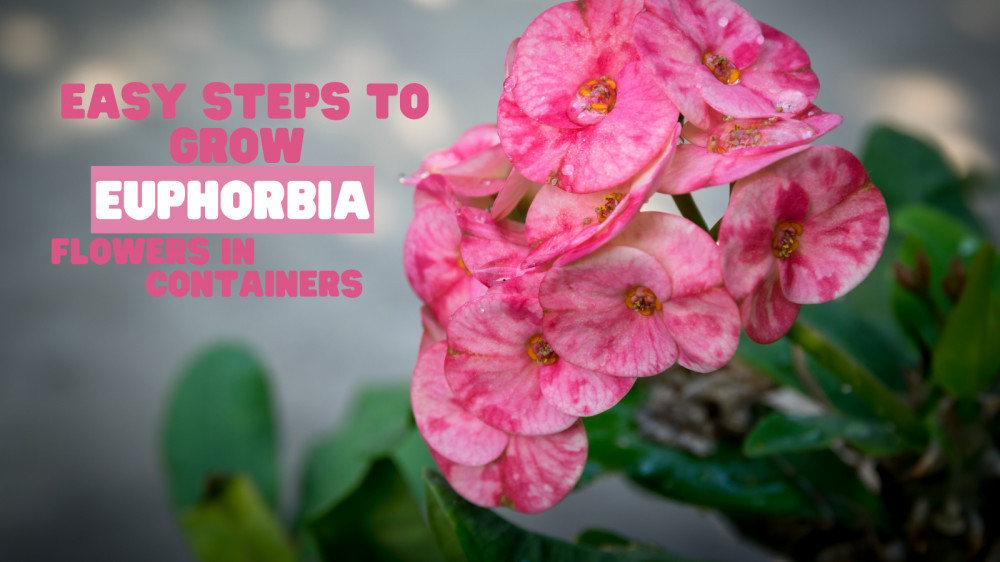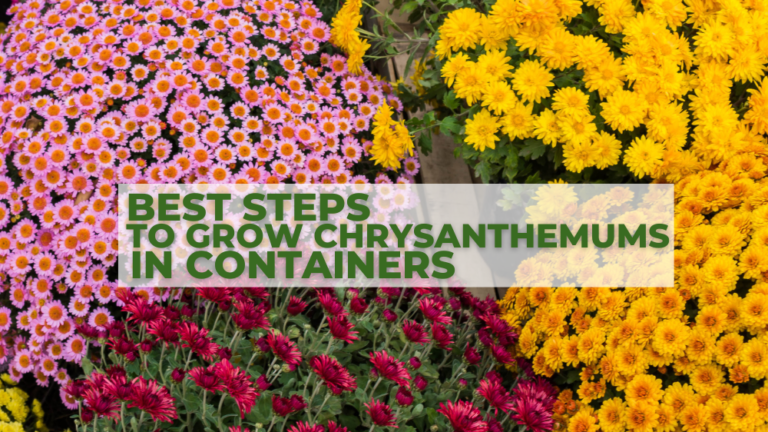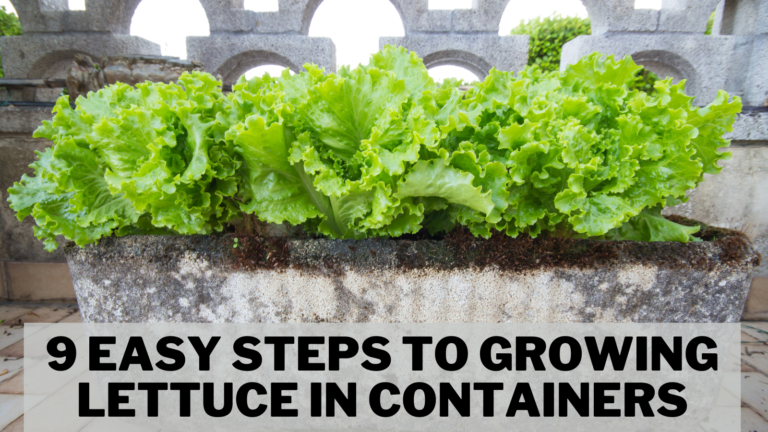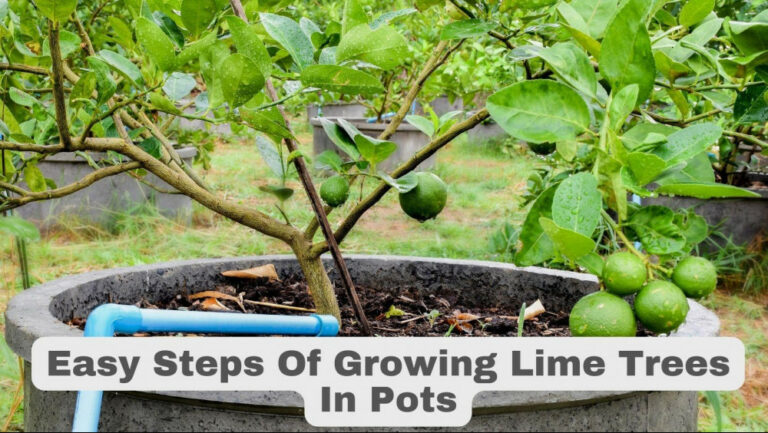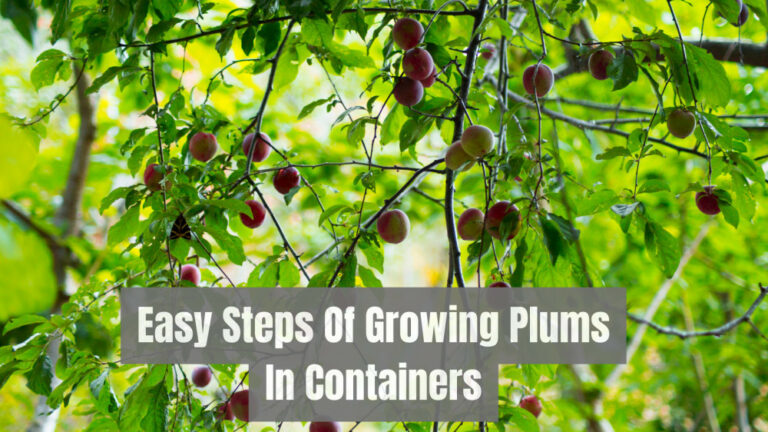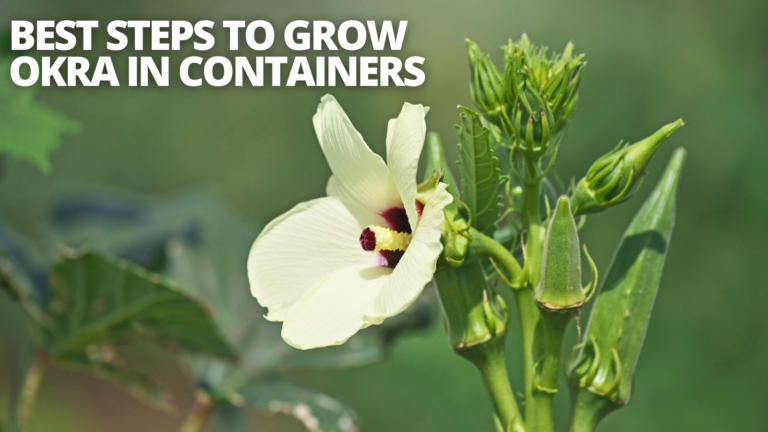Easy Steps To Grow Euphorbia Flowers In Containers
Easy Steps To Grow Euphorbia Flowers In Containers
Euphorbia is a flowering plant genus in the spurge family (Euphorbiaceae). Euphorbia is one of the most diverse flowering plant genera, with over 2,000 species ranging from small annuals to large, long-lived perennial trees and deciduous shrubs.
Poinsettias are among the most well-known euphorbias. In this article, I'll show you how you can easily grow euphorbia flowers in containers.
Origin Of Euphorbia
Euphorbia is a large and diversified genus of the spurge family flowering plants, generally known as spurge (Euphorbiaceae).
In everyday English, the term “Euphorbia” is occasionally used to refer to all members of the Euphorbiaceae family (in honour of the type genus) rather than just members of the genus.
Some euphorbias, such as poinsettias, are readily available commercially. Some, like the crown of thorns plant, are regularly cultivated as ornamentals or gathered and highly appreciated for the aesthetic aspect of their unusual floral structures (Euphorbia milii).
Euphorbias from the deserts of Southern Africa and Madagascar have acquired morphological traits similar to those of North and South American cacti. Hence, they (along with various other plants) are sometimes misidentified as cacti.
The plants all have a deadly, milky, white, latex-like sap and strange and unique floral structures. Gene sequence features or the shape and form (morphology) of flower heads can both be used to describe the genus. The head seems to be a single flower (a pseudanthium) when viewed as a whole.
It has a cyathium, a type of pseudanthium in which each flower in the head is reduced to the bare minimum required for sexual reproduction.
Individual blooms are either male or female, with males having just the stamen and females having only the pistil.
These flowers lack sepals, petals, and other elements that are common in other types of flowers.
The flower head and other structures beneath it have evolved to attract pollinators with nectar and forms and colours that work similarly to petals and other floral parts in other flowers.
It is the only plant genus with all three types of photosynthesis:
- CAM,
- C3, and
- C4.
Annual, biennial, or perennial herbs, woody shrubs, or trees having a caustic, deadly milky latex are among the plants.
Fine or thick roots, fleshy or tuberous, are available. Many species are succulent, thorny, or defenceless in some way.
Types Of Euphorbia
Euphorbias can grow in various environments, including mountains, deserts, and temperate forests.
Several species and cultivars are available, and more are being developed, so there is a wide range of options. Variations in sun, shade, and dry and humid soils exist.
They range from succulent cowboy cactus forms like Euphorbia am mak to smaller, shrubby varieties with bottlebrush stems and low-spreading clumps.
From the earliest unfurlings of new leaves to shoots emerging from barren soil, spring's zingy greens can't help but brighten our spirits at the end of a long winter. Euphorbias' greens take this to a new level, so pick one from this list for your garden.
You should find out the best variety to grow euphorbia flowers in containers.
1. Euphorbia Abdelkuri
Euphorbia Abdelkuri is a strange candelabra-like succulent plant with no leaves or spines resembling a grey candle with melted whitish-grey wax.
On one clump, it creates highly branching candelabra-like clumps that are usually not more than 1 m high by 1.5 m in diameter (but occasionally, in habitat, some plants can reach 3 m of height and an equivalent diameter)—one of the most sought-after Euphorbia species.
2. Euphorbia Abdelkuri Damask
This lovely cultivar is distinguished by its pinkish-reddish body colour, which varies in intensity according to light levels.
3. Euphorbia Abyssinica
Euphorbia Abyssinia is a vast, cactus-like Euphorbia candelabra tree with short thorns. Its dense crown of climbing branches can reach 4 meters in height (but it is reported to reach 9 meters or more).
Because Euphorbia abyssinica is a highly diverse species with various forms, it can be challenging to give specific descriptions.
4. Euphorbia Actinoclada
Euphorbia actinoclada is a spiny, perennial, succulent shrublet with a fleshy root merging into a short, thick rootstock that can grow up to 50 cm in diameter and 15 cm tall but is generally less (often called a caudex).
The upper part of the upright branches is up to 15 cm long and 1 cm in diameter. They have a dark green surface with brighter longitudinal lines. Cyathia flowers are reddish.
5. Euphorbia Aeruginosa
Euphorbia aeruginosa is a spiny, succulent shrub with a subterranean caudex that grows 15-30 cm (up to 40 cm north of Punda Milia).
Branches with numerous brownish spines, bluish-grey or brownish-green. Branching happens both above and below ground level. It gets its name from the coppery-green branches with contrasting reddish-brown spines.
6. Euphorbia Aggregata
Euphorbia aggregata is a dioecious dwarf succulent shrub with hundreds of spiny, free-branching heads that creates a low tufted cushion-like mass up to 1 m in diameter, however ancient huge plants with up to 40.000 (or even more) heads have been documented.
Euphorbia aggregata is closely related to Euphorbia ferox and Euphorbia pulvinata, which have distinctive growth shapes.
As a result, intermediate forms of the species are more likely to occur in the ecosystem. This species lacks the ferocious peduncles that define Euphorbia ferox.
7. Euphorbia Albipollinifera
Euphorbia albipollinifera is a lesser-known medusoid type euphorbia with a subglobose body, tuberculate central apical section, and few spreading branches up to 75 mm long, named after its uncommon pure white pollen.
8. Euphorbia Amygdaloides (Purpurea)
Euphorbia amygdaloides ‘Purpurea' is one of the more fascinating euphorbia species to cultivate if you want to add tonal depth to a border.
This plant is famous for providing rich tones to planting combinations because of its maroon-tinged foliage. In the correct conditions, these euphorbias will gladly self-seed.
This plant is an ideal planting partner if you're interested in learning how to cultivate ferns. It also looks great when planted with carexes (sedges).
9. Euphorbia Griffithii ‘Fireglow'
If you have an underperforming shady garden corner, don't despair: a few species of euphorbia are ideal for you. With radiant orange flowers in early summer, Euphorbia griffithii ‘Fireglow' is a beautiful addition to a shadier area.
These shade-loving plants are compact euphorbias that propagate via rhizomes, as well as provide a cheery warm glow to calm areas. Although they will die back over the winter, they offer excellent ground cover.
Steps To Grow Euphorbia In Containers
More than 3,000 species of spurges (Euphorbia spp.) resemble succulents or cacti. Some types produce red, yellow, green, purple, or brown flower bracts. Depending on the cultivar, they grow in USDA plant hardiness zones 4 to 11.
Spurge grows nicely in containers, indoors and outdoors, but it must be potted and cared for properly.
Like most succulents, spurge takes little water and does not thrive in wet or soil too moist, but it is a low-maintenance alternative for a container garden. Follow these steps to grow euphorbia in containers.
1. Choose A Container For Your Euphorbia
The container size determines the number of spurges to plant in a single pot. However, most kinds may quickly fill a container, so single planting plants work well. Choose a container two to three inches wider in diameter than the spurge's base.
Only use containers with at least one drainage hole on the bottom. Although most euphorbias prefer to grow in the ground, some, like E. myrsinites, can thrive in containers.
This is mostly because they want well-draining soil, and it's simple to make potting compost that meets these requirements.
2. Soil Requirements Of Euphorbia
Euphorbia plants flourish in soil that drains properly. Air circulates the roots better in well-drained soil. Also, if you leave these plants in moist and damp soil for an extended period, they may rot.
Succulent-specific soil is readily available from nurseries and internet retailers. Preparing the soil is not difficult. Mix soil, one part peat perlite, one part clean sand, and one part peat moss in a pot with a drainage hole at the bottom. This is the most acceptable soil mixture for growing Euphorbia plants.
Euphorbias, especially succulent types, require well-draining soil. The optimum soil is sandy soil with a slightly acidic to neutral pH of 5.0 to 7.0, though most will thrive in slightly alkaline soil. When grown in containers, Euphorbia should be planted in a cactus/succulent potting mix.
Euphorbias need a sunny location and fertile, well-drained soil to thrive. Some types, however, are shade tolerant and thrive as ground cover beneath trees and shrubs.
3. Sunlight Requirements Of The Euphorbia Plant
Although some species can tolerate moderate shade, Euphorbia plants prefer full sun, at least six hours of direct sunlight on most days.
Euphorbia are warm-loving plants. Thus, they thrive in south—or west-facing windows (four or more hours of direct sunlight each day), though they can also thrive in intense indirect light. In autumn or spring, they can be planted in a sunny location in well-drained soil.
Plant shrubby varieties in the spring and shelter them from chilly winds until they establish themselves. Most plants like direct sunlight. However, evergreens can take some mild shadow. The taller varieties make excellent border plants.
The lime-green spring blooms and glossy, evergreen foliage of Euphorbia amygdaloides var. robbiae provide appeal throughout the growing season. It thrives in dark, dry environments.
4. Watering Of Euphorbia Plants
When the plant is actively growing, water whenever the top two inches of soil feel dry from spring through fall.
Reduce watering to only when the plant exhibits indications of wilt during the winter. Watering your plant regularly will keep it healthy.
Water once a week or whenever the soil is dry a few inches beneath the soil top during the summer or on warmer days.
Deeply water the plant, but don't let it sit in water. This could result in root rot. Water your Euphorbia plant in the evening during hot weather.
This is because less water evaporates in the evening. When the weather is chilly, plants also take up more water. In the winter, water your plants first thing in the morning.
Plants should not be overwatered, as overwatering can cause root rot. Drooping blossoms or a limp, brown plant neck are signs of root rot. To prevent root rot, remove the problematic sections as soon as possible.
Adjust the water supply as the plant heals. Most euphorbia types do not require daily watering.
Plants with advanced root rot should be destroyed. If a majority of your euphorbia has been browned, discard the plant and replace it with a fresh one.
5. Temperature And Humidity For Euphorbia Plant
Most euphorbia species can withstand high temperatures and prefer a warm climate with average daily temperatures of around 80°F.
The ability to withstand cold varies between species. Some can survive a light frost, while others struggle to grow in temperatures below 55°F.
Humidity tolerance also varies. When there is a lot of humidity, adequate ventilation around the plants is critical to avoid fungal illness.
6. Fertilizer For Euphorbia Plant
Euphorbia species have different feeding requirements but will benefit from some fertilizer. The ability to withstand cold varies between species. Some can survive a light frost, while others struggle to grow in temperatures below 55 degrees Fahrenheit.
Humidity tolerance also varies. To avoid fungal illness, adequate ventilation around the plants is critical when there is a lot of humidity. Euphorbia plants will do fine with a light liquid fertilizer throughout the growing season.
Follow the instructions on the product package for the amount to use. Plants cultivated in containers often require more feeding than those planted in the ground. A plant in need of feeding produces fading leaves near the bottom.
Each species has unique nutritional needs; however, fertilizer will assist all Euphorbias. Potted plants require regular feeding. Once a week, apply a balanced fertilizer diluted to 1/4 strength in a 10-10-10 NPK formulation.
7. Propagating Euphorbia
Euphorbias can be produced from seed, but seed germination is difficult (or even find). As a result, stem cuttings are used to propagate this plant, which is best done in the spring when new growth begins but can also be done in the summer.
- Using a sharp, clean knife, make a tip cutting at least 3 inches long. Wear gloves while handling fresh cuttings, as they can exude milky sap and hurt the skin.
- Allow the cut stem to dry and become callous at least overnight, preferably a couple of days. This will help you root the cutting more successfully.
- Fill a 4-inch pot halfway with a seed-starting mix or cactus potting mix and steadily water until evenly saturated.
- The rooting hormone should be applied to the cutting.
- As the cutting grows roots, keep the growing medium mildly moist. After you feel resistance when gently tugging on the stem, it's ready to be planted in a larger pot or in garden soil.
8. Pruning Euphorbia Plants
Pruning is necessary for Euphorbias, especially after flowering. Cut back euphorbia stems at the base as blossoming begins.
Trim any damaged stems. This will help maintain the plant's health and appearance. In the fall, cut the euphorbia plant to the ground. This is to prevent it from succumbing to frost. Don't panic; your euphoria will regrow in the springtime.
Take pieces that are two to three inches in length. Trim the lowest leaves off the cuttings and place them in tiny trays or pots of coarse horticultural sand. Once rooted, pot up individually. Euphorbias frequently self-seed, resulting in new plants.
After flowering, some evergreen euphorbias only need their faded blossoms trimmed back.
Others, such as Euphorbia charcacias variants, have biennial stems that must be trimmed to the ground after flowering. In the autumn, deciduous trees must be chopped to the ground.
9. Common Pests & Diseases Of Euphorbia Plants
Euphorbia plants are generally trouble-free. Few insects are attracted to euphorbias because of the milky fluid and prickly needles. However, there are a few pests to be aware of. The most prevalent are mealybugs and spider mites.
They eat the plants, causing them to become weak and eventually die. Both of these insect populations can swiftly grow to vast numbers. So the best way to control them is to catch them early. Nontoxic insecticidal soaps and oils are effective.
When conditions are too wet, root rot and fungal infections might develop. Before using fungicides, try to improve the growing circumstances of the infected plant.
Mildew is the most prevalent fungal disease that affects succulents. It appears as a powdery white covering on the plant.
The damp and moist environment can encourage mildew growth if your plant doesn't get enough ventilation and sunlight.
Use fungicides designed for roses and ornamental plants. The plant may be harmed if a general-purpose fungicide is used.
Isolate sick euphorbia from the rest of the plants right away. This is vital to prevent mildew from spreading to adjacent plants.
Conclusion
“Flowers are a proud assertion that a ray of beauty outvalues all the utilities in the world.”– Ralph Waldo Emerson. Do you love to grow euphorbia flowers in containers? Or have you already done so? Let us know in the comment box.
I trust you enjoyed this article on the Easy Steps To Grow Euphorbia Flowers In Containers. Please stay tuned for more blog posts soon. Take care!
JeannetteZ
>>>Please click here to read my all-inclusive article about Container Gardening<<<
>>>Are you interested in homegrown herbs and medicine? Please click here to find out more about it!<<<
Your Opinion Is Important To Me
Do you have thoughts, ideas, or questions? I would love to hear from you. Please leave me your questions, experiences, and remarks about this article on the Easy Steps To Grow Euphorbia Flowers In Containers in the comments section below. You can also reach me by email at Jeannette@Close-To-Nature.org.
Disclosure
This post may contain affiliate links. I earn from qualifying purchases as an Amazon Associate and other affiliate programs. Please read my full affiliate disclosure.
You might also enjoy these blog posts:
Simple Steps Of Growing Cilantro In A Container
Necessary Steps Of Growing Parsley In A Container
Easy Steps Of Growing Sage In A Container
Easy Steps Of Growing Thyme In A Container
Easy Steps Of Growing Chives In A Container

